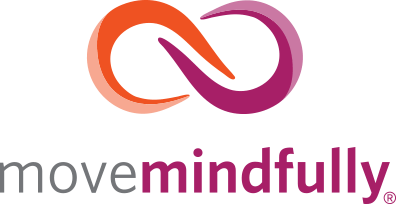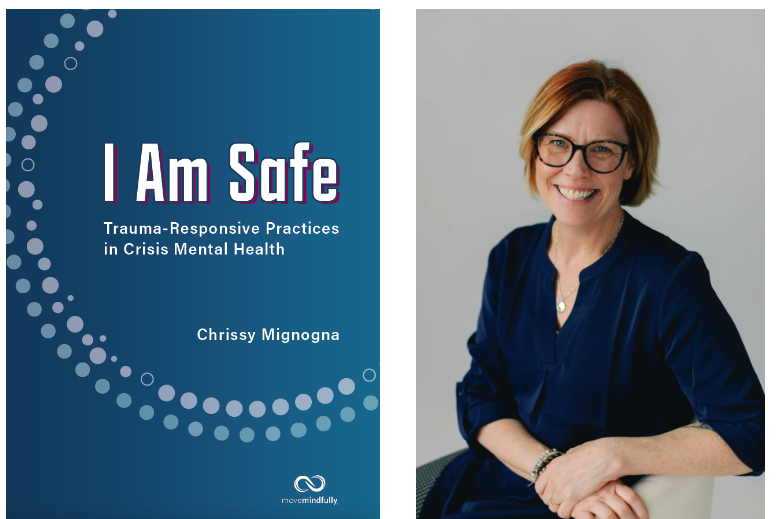I want to share a little bit about my new book, I Am Safe: Trauma-Responsive Practices in Crisis Mental Health.
I began working on this book in 2018 and I am nerv-cited (nervous+excited, a word I learned from a teen in a crisis mental health setting) to be sharing it with all of you. I wrote this book because the teaching we have been doing in hospitals, juvenile services, and special education districts (with both youth and adults) for over a decade has been so impactful to me personally and to our work here at movemindfully.
As you know, over the past several years mental health concerns have escalated into a public mental health crisis. The resulting overwhelm to health care and educational systems has led to a critical need for portable mind-body coping skills that can be easily accessed during times of stress, distress, and trauma. I Am Safe: Trauma-Responsive Practices in Crisis Mental Health is a thoughtful compilation of the scientifically proven mind-body strategies that can be used in the moment to support ourselves and others during times of struggle. Aligning with recommendations from the CDC to promote mental health literacy and access to mindfulness practices, I Am Safe is a step-by-step resource for how to implement mind-body skills groups in educational and therapeutic settings.
Here is an excerpt from I Am Safe about my experiences teaching in a hospital setting:
When I sat down with some patients as they watched The Princess Bride, everyone avoided making eye contact with me, so I didn’t invite them to group or request that they turn off the TV or dim the lights for our session. Instead, I quietly greeted everyone and started to watch the movie with them. After about five minutes, I asked one of the patients watching the movie, “Do you think we could pause this and do a little stretching?” She surprised me by saying, “Sure.” As we set up for our group, another patient quietly came in and sat on a mat.
We ended up having a full session and used up all our group time. Simply by allowing myself to be a part of the environment, not pushing or demanding anything, the energy within the unit shifted. It would have been easy to barge in, loudly state, “Time to turn off the TV for group!” and immediately get shut down. The welcoming and nonthreatening way we show up is a key element in creating the safe and inclusive environment needed for this work. That first patient even looked relieved when I asked if we could do some stretching, almost as if she needed that extra encouragement to engage. By not making assumptions based on how people initially present, we are able to form a connection—and connection is vital for healing trauma.
This way of connecting can further be understood as attunement. Clinical professor of psychology and mindfulness expert Dr. Daniel J. Siegel defines attunement as “[allowing] our own internal state to shift, to come to resonate with the inner world of another.” In my experience, attunement has been particularly important when working with individuals who feel “othered” by mindfulness and mainstream yoga. This feeling of exclusion may be due to gender identity, age, body size, physical ability, religion, and/or race. When met with reluctance and/or resistance, responding with an open-hearted welcome for each person, just as they are, can create just enough space for people to feel safe, seen, and accepted.
To order your copy of I Am Safe: Trauma-Responsive Practices in Crisis Mental Health, visit our website. If you are interested in more information about our new training offering based on this book, please contact us at info@move-mindfully.com.

